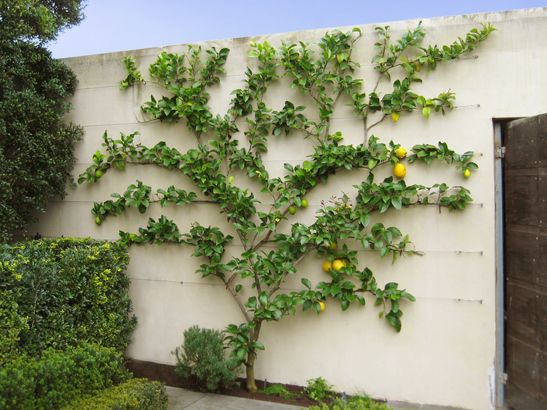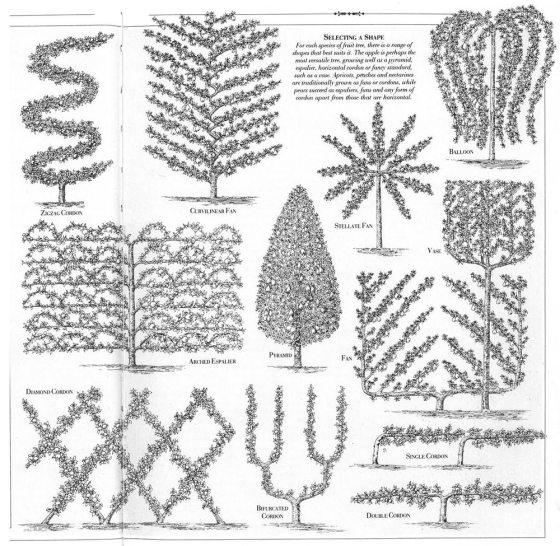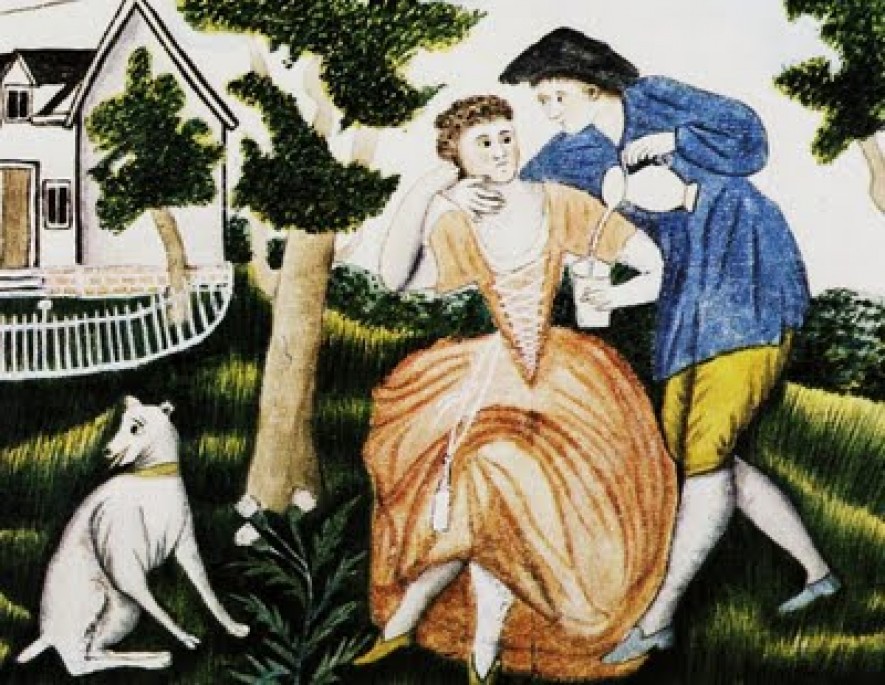T
 he practice of espaliering fruit trees was brought to Ireland in the seventeenth century by Huguenots fleeing persecution in France. Training apples and pears as espaliers, not only saves space in the garden but also ensures a good crop, keeps trees fairly disease free and creates a good architectural vertical feature in the garden.
he practice of espaliering fruit trees was brought to Ireland in the seventeenth century by Huguenots fleeing persecution in France. Training apples and pears as espaliers, not only saves space in the garden but also ensures a good crop, keeps trees fairly disease free and creates a good architectural vertical feature in the garden.
The espalier method means growing a fruit tree or ornamental shrub while training its branches to grow flat against a wall, supported on a lattice or strong wire.
When planning to grow a tree as an espalier, make sure you buy one on one of the following rootstocks, this can be complicated so ask in your nursery for advice when buying a tree. Pears trees are generally grafted onto quince stock. You can often buy trees with one to three tiers already formed or grown from one-year-old trees.
Planting and initial training
Firstly you need to establish a training system against a wall or fence. Erect horizontal wires 35-45cm (15-18in) apart between posts, or straining ‘eyes’ on walls or fences.
Trees should be planted 3.75m-6m (12-20ft) apart, according to their vigour.
When planting a new ‘unfeathered maiden’ – garden parlance for a one-year-old tree with no side shoots, cut back the main stem to 30cm (1ft) from the ground
Allow the top three buds to grow out in spring, train the top one vertically up a cane, the others two to canes at 45 degrees to the main stem. In November, lower them carefully until they are horizontal, tying them in with soft twine
Cut back the vertical stem to within 45cm (18in) or the lower arms, leaving two buds to form the next horizontal layer and the top bud to form the new leader. If growth is weak, prune back the horizontal branches by one-third to downward facing buds
The following year train the second tier in the same way as the first. Cut back competing growths on the main stem and side shoots from the horizontal arms back to three leaves above the basal cluster
Repeat the process until the trees have produced their final tier and grown horizontally to fill their allotted space. Then allow two shoots to grow, tie them to the top wire and cut them back to within 2.5cm (1in) of their base the following winter
Remove the blossom in spring, for the first three years, so all of the energy goes into plant growth.
Prune trees after fruiting by cutting back the side-shoots growing from the horizontal leaders to three leaves from the basal cluster, 7.5cm (3in) long. Shoots from previously pruned side shoots should be cut back to one leaf from the basal cluster, 2.5cm (1in) long
If any secondary growths arise after this pruning, cut them back to the base in September. Side-shoots on the vertical stem are best removed completely
Clusters of fruit buds may need to be thinned after seven or eight years of ‘spur thinning’, alternatively, a few can be done each year in the dormant season (November to March), reducing over-complicated spur systems to one or two fruit buds.
Trees and shrubs suitable for espaliering
- Pears
- Cercis
- Laburnum
- Crepe Myrtle (Lagerstroemiae)
- Apples
- Parrotia persica
- Flowering almond, Apricot, cherry, peach, plum (Prunus)
- Cotoneaster
- Pyracantha
